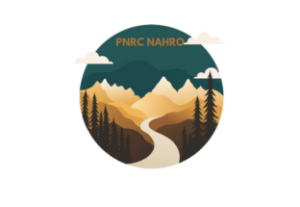Survey says: How real estate tech experts feel about new trends
At the NMHC OpTech annual conference earlier this month, I had the pleasure of moderating the “Ask the Tech Pros” panel. It was a great opportunity to hear from a few top Tech leaders in the industry, including CIOs, VPs, and Technology Directors as they collectively discussed security, operating in the cloud, and enablement through software. During the session, we used live polling to get the audience’s opinion on nine buzzwords to find out how applicable they are in the real world. The respondents indicated whether they have already piloted or adopted the particular tech, if it’s slated for 2020 or by the end of 2022, and if they had no plan to adopt or consider it.
Below are the survey responses, and some quick thoughts on them, for nine tech topics with varying degrees of adoption across the real estate industry. The volume of responses ranges from 40 to 51 session attendees, which is a random sampling from the 2300 attendees at the event. So, for full disclosure, this is not a strictly scientific study, but it’s interesting data from a vertically focused audience.
Virtual Reality
Definition: The computer-generated simulation of a three-dimensional image or environment that can be interacted with in a seemingly real or physical way by a person using special electronic equipment, such as VR goggles, a helmet with a screen inside or gloves fitted with sensors.
Proptech Application: Virtual reality can be used to furnish and explore physical spaces in a digital realm. For example, one could “tour” the digital recreation of an apartment space, whether empty or fully furnished, without actually being onsite.

Results indicate limited adoption currently and through 2022 with a large majority not having plans or simply not considering. As this technology is still maturing, these results are not surprising. The piloting and limited adoption is likely tied to new construction where a foundational digital model (BIM) is an increasingly common tool that can provide a basis for virtual reality applications.
Augmented Reality
Definition: A technology that superimposes a computer-generated image on a user’s view of the real world, thus providing a composite view.
Proptech Application: With your smart device, and your future smart glasses, one could see leasing advertising, amenity information, potential furniture, or even a virtual tour guide superimposed on physical reality.

These results show that people feel similarly about virtual and augmented reality, with a large majority of respondents not having plans to adopt or simply not considering it. Both technologies are still maturing, but augmented reality will be driven by the likes of Google, creating the visualization layer that real estate operators will leverage.
Digital Twin
Definition: A digital twin is a digital representation of a physical object or system. The twin has the ability to receive input from sensors that gather data from the real world, allowing it to simulate the physical object in real time, in the process offering insights into performance and potential problems. The twin could also be designed based on a prototype of its physical counterpart, in which case the twin can provide feedback as the product is refined; a twin could even serve as a prototype itself before any physical version is built.
Proptech Application: With new construction, it is now standard to utilize a digital, three dimensional model (BIM) to address potential construction issues (collision detection) in the digital realm and not in the field where costs can quickly escalate depending on the magnitude of the issue found. The BIM model is largely a static model, meant to drive development and it can be leveraged for Virtual Reality applications as noted above. A digital twin would take that model forward and use it for a framework to display operational information in new real time. From binary measures like occupancy to real time measures of energy and water consumption, the digital twin will combine the sensors from the Internet of Things (IoT) with the digital representation of the asset.

Results indicate a vast majority of respondents not having plans or simply not considering. With investment required in both creating the digital twin as well as the instrumentation of the physical asset, it is not surprising that most firms do not yet have this on their agenda.
Smart Home/Unit
Definition: A smart apartment is a living space outfitted by smart devices such as smart lights and locks, as well as integrated services like home cleaning and package delivery. Smart apartment buildings are also wired from the inside-out to connect devices, building systems, residents, and management.
Proptech Application: This was one of the more popular topics at this year’s NMHC OpTech. Locks, lights, sensors, gates, and package lockers/rooms are all aspects that can make an apartment “smart” – the definition is quite broad. These technologies are making their way from the single family market to the multifamily market where complexities increase with the number of units and the relationship between landlord and resident. Smart apartments can drive increased rent as an amenity that will attract some residents. Smart technology can also impact risk management (by detecting unusual water usage), utility costs (by programming vacant units to adhere to HVAC and lighting schedules) and staff efficiency (by allowing access for turn activities through the use of digital keys or remote lock actuation).

Given the number of exhibitors and session on this topic, these results are what one would expect – substantial adoption of these technologies through 2022 with many respondents reporting current pilot and production usage. Device connectivity is the most frequent barrier and there are a number of ways to solve that problem as we approach 2020, with more (5G) on the way. The other frequent barrier is involved with ownership, access, and control over the devices. This grey area between the resident and the landlord must be carefully addressed to optimize the benefits for both parties.
Unaccompanied (or Self-Guided) Tours
Definition: This should be pretty straight-forward – it’s a tour where one either navigates a route by oneself or is directed in some way, shape, or form by mobile technology in place of a human guide.
Proptech Application: Imagine prospects touring apartments unsupervised, leveraging digital content as well as staged materials, to explore a model unit without the pressure of a leasing agent being present. Leveraging smart locks, digital keys and other tech, these tours are expanding the self-service possibilities on sites, freeing staff for additional activities.

The popularity of this topic at the conference is reflected in these survey results as well with nearly half of the respondents reporting adoption by the end of 2020. This technology is currently available and, more importantly, the attitude towards this has warmed from skeptical to receptive, as early results are continuing to show a positive impact on leasing.
Conversational AI
Definition: Conversational AI refers to the use of messaging apps, speech-based assistants and chatbots to automate communication and create personalized customer experiences at scale.
Proptech Application: This technology is starting to replace humans in initial interactions for phone calls, chat and text. Leveraging the AI of providers like Google, Amazon and Twillio will provide capability at scale to have natural language exchanges with prospects and residents. While it may start with simple interactions, the complexity and scope will continue to grow.

These results are also consistent with the popularity of this topic at the conference. Combining natural language and artificial intelligence will, in time, provide better customer experiences than generic call centers and can currently handle simple requests and exchange of information.
Robotic Process Automation
Definition: Robotic process automation (RPA) is the use of software with artificial intelligence (AI) and machine learning capabilities to handle high-volume, repeatable tasks that previously required humans to perform.
Proptech Application: Proptech forms need automation as much as any other enterprise. As a term, RPA is broad in scope and many things can fit the bill, including things you are likely already doing.

As panelists, we were all a bit shocked by this result as we expected more adoption. Consensus is that this outcome is part definitional (the term was new to this audience) and that, considering the large net that RPA casts, many firms are doing something that would qualify as RPA and they just were not aware of the connection. The other thing to consider here is that the customer audience might be looking for more industrial grade solutions from providers as opposed to building something on their own.
Blockchain
Definition: A blockchain is a time-stamped series of immutable data records managed by a cluster of computers but not owned by any single entity. Each of these blocks of data (i.e. block) are secured and bound to each other using cryptographic principles (i.e. chain).
Proptech Application: While the idea of separating data across several locations for security reasons may seem enticing to some, there are currently very few actual use cases for this technology. Potential applications for this technology as it pertains to the real estate industry today is abstract at best.

Blockchain, while promising, is still a hammer in search of a nail as it is a generic technology that has yet to find a compelling use case in multifamily proptech that has gained traction.
Venmo-like Payments
Definition: Venmo is a free-to-use mobile payment app that allows users to send and receive money. The app is owned by PayPal and connects with users’ and businesses’ bank accounts or credit cards to send and receive funds online. It is currently only available for users inside the U.S.
Proptech Application: Currently, roughly 50% of residents still pay rent with a check, either because they like checks or because their landlords do. The other half are using some form of traditional electronic payment (ACH, debit, credit). Venmo, as more of a peer to peer payment app, allows the transfer of funds between individuals with little more than an email address shared between the parties.

These results were what we expected. As digital natives continue to be the dominant demographic in our communities, checks will become less frequent and alternative mobile payment methods will continue to emerge. We did a quick show of hands in the room, asking if any residents had already inquired about paying rent with Venmo or a similar vehicle and a large number of attendees indicated that the topic has been raised. As electronic payment providers bring this feature to market as another payment choice in their offering, the adoption of these payment types should increase more quickly.
The results gathered from this informal study are quite clear when it comes to which technologies and trends are making gains in the industry. While adoption for AI-based solutions and smart device compatibility will continue to be strong into 2020 and beyond, technologies like virtual and augmented reality still need some time to mature before they can gain traction. More proven technologies will continue to be leveraged to drive efficiencies and improve customer experiences while a clear application for blockchain has yet to emerge.
Want to learn more about where real estate technology is going in 2020? Catch up on some of my predictions for the new year.
20 Ways Companies are Transforming Their Offices
The office is undergoing its most radical transformation in a generation. Around the world, office culture and even the very concept of the office is changing. Organizations of all types are adapting their spaces to create a better working future. In…

